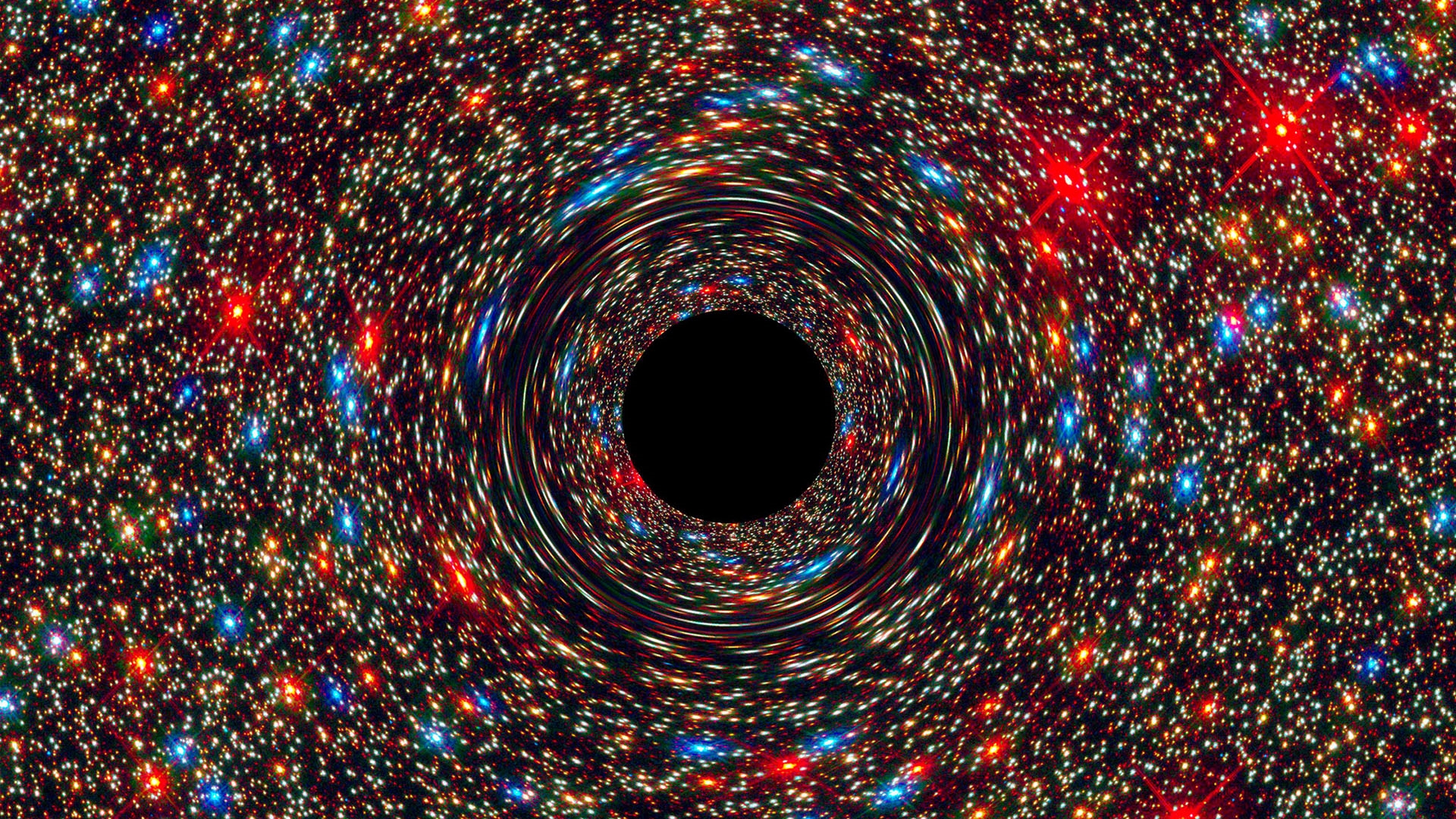
Computer-simulated image shows a supermassive black hole at the core of a galaxy. Credits: NASA, ESA, and D. Coe, J. Anderson, and R. van der Marel (STScI)
Astronomers have discovered a nearly record-massive black hole mass of 17 billion suns in the wrong place: in the center of the galaxy, located in a sparsely populated region of the universe. Observations made with the help of «Hubble» and «Gemini» telescopes, they showed that these monsters may be more common than previously thought.
Until now, supermassive black holes have masses of about 10 billion Suns detected in the nuclei of galaxies in the regions of the universe, closely packed other major galaxies. In fact, the current record holder, above the mass of the Sun 21 billion times, is located in the crowded cluster consisting of more than 1,000 galaxies.
“The newly discovered supersized black hole resides in the center of a massive elliptical galaxy, NGC 1600, located in a cosmic backwater, a small grouping of 20 or so galaxies,”, - said the discoverer of Chung-Pei Ma of the University of California at Berkeley.
In addition, the researchers were surprised to discover that the black hole in NGC 1600 is 10 times more massive than they predicted. Based on previous «Hubble» observations, astronomers have deduced the relationship between black hole mass and the mass of the central bulge of the host galaxy. The bigger the bulge, the proportionally more massive black hole. But for the mass of the galaxy NGC 1600 giant black hole outshines its relatively small bulge.
One idea, explaining the size of the monster at the center of NGC 1600 and the paucity of the neighborhood, it is the absorption of the surrounding galaxies in the process of evolution. NGC 1600 is dominating in the group, it is at least three times brighter than its companion.
Observations have shown that the majority of galactic gas has long been absorbed. At that time, the black hole shines like a bright quasar, and now the monster is sleeping.
Source

